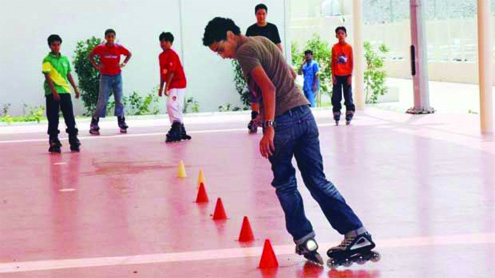 I am a physical therapist who advocates physical education to be an integral part in every school curriculum. During my childhood, I was fond of going to the gym and even playing soccer.
I am a physical therapist who advocates physical education to be an integral part in every school curriculum. During my childhood, I was fond of going to the gym and even playing soccer.
Physical education was a subject taught in my school, so I was given a chance to participate in different kinds of sports. And in my present daily work routine, exercise is an important part of treatment in rehabilitating patients. Physically, emotionally and mentally I can see the benefits from exercise.
However, nowadays it can be observed that children are starting to become inactive despite of all the benefits of physical activity. Blame it on the television and the modern gadgets that we have right now. Children would rather sit and face those electronics than play or get into sports. No wonder obesity in children has grown considerably around the world. And for us, adults, we become more and more sedentary and inactive; we ride a car instead of walking and again, we would rather spend time lying on a sofa, face the computer, and talk on the phone than exercise.
Having said this, I think having physical education as a subject should not just be limited to elementary or high school students. All colleges and universities — whether they are female or male exclusive — should include physical education as part of their regular study program. Once children enter school years, some 35 percent of their time will be spent in school. During that time, it would be really good to know that your children are not only learning academically, but also skills and knowledge necessary to keep their body healthy as they age.
Physical education is the only school program that provides students the opportunity to develop fitness and at the same time promotes social and problem-solving skills competencies, no doubt the reason physical education has even become a mandatory subject in some countries like Korea.
And when we talk about physical education, it incorporates a great variety of activities. Exercises, sports and fitness are some that can encompass physical education.What other benefits can we obtain from physical education?
Physical education helps boost our brainpower. Exercise is one aspect of physical education. When we exercise, our breathing rate increases to ensure more air reaches the lungs, so that more oxygen is being delivered. Our heart rate increases to give more blood to all working muscles and other tissues and organs. Our brain is constantly working and being challenged in any activity that we are doing. This means that more blood flows to our brain from the effect of exercise, and a good blood supply will make it work more effectively.
Some studies done on mice to see the effects of exercise have shown that the brain of the mice that did treadmill workouts produces growth factors — proteins that increase the number of connections between neurons and the birth of neurons in the hippocampus, a brain region important for memory.
Add to that the study on physical activity and mental function carried out on about 6,000 women age 65 and older over an eight-year period, which showed that women who were more physically active were less likely to experience a decline in their mental function than inactive women.
Another report showed that a physical exercise program, even if started when people are in their 70s, could significantly boost executive function. Exercise does also help relieve stress. According to Cedric Bryant, chief exercise physiologist for the American Council on Exercise, “Exercise produces a relaxation response that serves as a positive distraction.”
When we exercise, our body releases chemicals called endorphins. These chemicals help stimulate a positive feeling in the body. For some reason, after doing exercise, even though we might feel tired, we still have this high energy and positive outlook on life. Once we adapt to exercising regularly, we’ll just be surprised how much energy and endurance we have gained.
There are also researches that show that exercise can slow or help prevent heart disease, stroke, high blood pressure, high cholesterol, type 2 diabetes, arthritis, osteoporosis (bone loss), and loss of muscle mass.
According to the American Heart Association, physical inactivity is a major risk factor in developing coronary artery disease. It also increases the risk of stroke and other major cardiovascular diseases as obesity, high blood pressure, low HDL (“good”) cholesterol and diabetes. The American Heart Association recommends that children and adolescents participate in at least 60 minutes of moderate to vigorous physical activity every day.
According to the American Diabetes Association, being active improves blood glucose management. Activity makes your body more sensitive to the insulin you make. Activity also burns glucose or calories. Both actions lower blood glucose and improve blood fats. Exercise can raise good cholesterol (HDL) and lower bad cholesterol (LDL) and triglycerides.
When it comes to our muscles and bones, both strengthen in response to exercise. We should always follow the old saying “Use it or lose it.” Bones are living tissues, and stressing the bones through physical activity, such as exercise, causes new bone tissue to form, which makes them stronger. This kind of physical activity also makes our muscles stronger.
We all know that as we grow old, we become inactive and weaker, but the effect of exercise on our muscles and bones shows us how important it is for all ages, men and women alike, to do exercise. Who wants to get old and stoop and be prone to fracture and fall because of fragile bones? I am a parent of five children, and I would love to see my children grow and be exposed to different physical activities, whether it is exercise, sports or fitness programs, as part of their physical education subject. In addition to the health benefits of physical activity, my children will also learn social, emotional and cognitive skills as well as self-responsibility. – Arabnews












